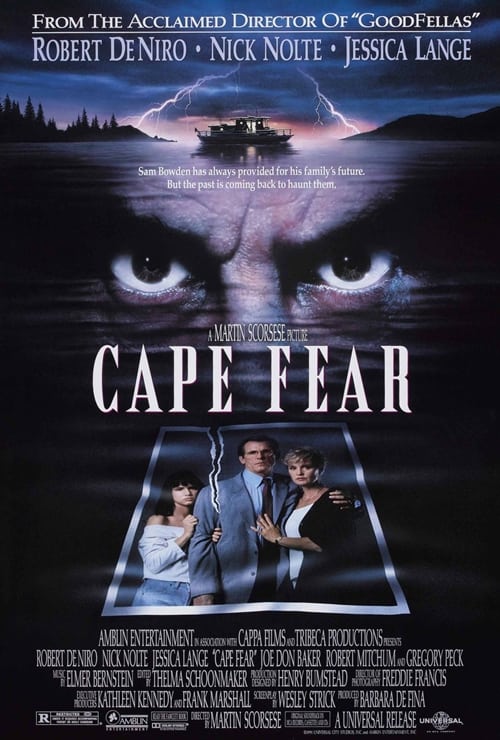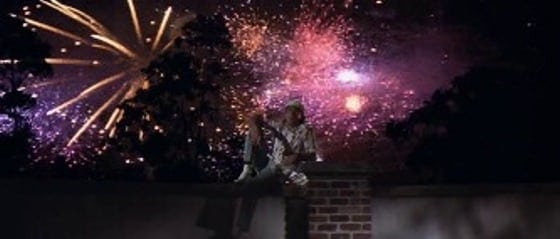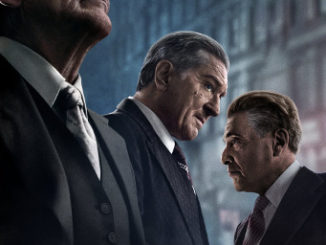Cape Fear (1991)
Directed by: Martin Scorsese
Written by: James R. Webb, John D. MacDonald, Wesley Strick
Starring: Jessica Lange, Juliette Lewis, Nick Nolte, Robert De Niro
HCF REWIND NO. 177: CAPE FEAR [US 1991]
AVAILABLE ON DVD AND BLU-RAY
RUNNING TIME: 123 min
REVIEWED BY: Dr Lenera, Official HCF Critic
After spending fourteen years in prison for rape, Max Cady is released. He promptly tracks down Sam Bowden, a Georgia lawyer who, fourteen years ago, buried a report about his victim being promiscuous which could have lightened Max’s sentence who, at the time, was illiterate. Cady begins to stalk and subtly threaten Bowden’s family, and kills the Bowden family dog, though Sam cannot prove this. Bowden asks the police to intervene, but they cannot prove Cady guilty of any crime….
It’s one of those debates that rages on: which version of Cape Fear is the best, ignoring the fact that far more people have probably seen Martin Scorsese’s remake than J.L. Thompson’s original? I guess more folk would claim the 1991 version to be the better picture, though a quick perusal of the IMDB indicates that there are still many who prefer the original. Myself…well, coming out of the cinema in 1991, I was convinced that Scorsese, who is after all [I think most people will agree] a far greater filmmaker than Thompson [though he struggles to approach the heights of his early masterpieces], had made the better film – that’s what seeing a film for the first time on the big screen as opposed to on TV does for you – but after a while I wasn’t sure. Perhaps I will have decided when I get to the end of this review. The thing is, there are some ways in which the original is better, and some ways in which the remake is better. For example, Scorsese’s film is around 20 minutes longer, allowing for more character development and complexity, but that also means that it loses much of that thriller pace which the 1962 film possessed in spades. Also, the remake is more shocking, the relaxation of censorship allowing for us to see more violence, but sometimes leaving it more to the imagination can be more effective. I suppose which version one prefers depends a lot on what you think is the best way to approach certain things.
Amazingly Steven Spielberg was going to direct this film, but got uncomfortable with the material so he offered it to Scorsese in return for Schindler’s List, which Scorsese was planning. Wesley Strick’s screenplay was based more on the original film than the novel, though it also seemed to add in elements of The Night Of The Hunter, where Robert Mitchum had also played a psychopath. Amazingly the script went through a total of 24 drafts as Scorsese wanted more and more moral complexity in his version, the Bowden family for instance no longer being whiter than white. Harrison Ford and Robert Redford [Spielberg had wanted Bill Murray!] were both offered the role of Sam Bowden while Reese Witherspoon, Drew Barrymore, Sarah Jessica Parker and Alyssa Milano were in the running for Danielle, Sam’s daughter, before Nick Nolte and Juliette Lewis won the parts. Gregory Peck, Robert Mitchum [who has a particularly memorable line when his character sees the heavily tattooed Max being strip searched: “I don’t know whether to look at him or read him”] and Martin Balsam from the first film were given supporting roles in this one, and Elmer Bernstein adapted Bernard Herrmann’s score. It was Scorsese’s biggest hit, and De Niro and Lewis received Oscar nominations, though many snobby critics seemed to complain that Scorsese was lowering himself by doing this kind of film.
Now straight away, Scorsese’s film is much more visually stylish and more attractive to look at. Saul Bass’s titles give us swirling images of water over hard-to-make out shots from later in the film, and throughout the great cinematographer Freddie Francis does a really stunning job on the film. An especially brilliant example of this is when the inside of the Bowden house is lit up with the colours of fireworks at night-time and Sam’s wife Leigh looks outside to see Max, casually smoking a cigar whilst sitting on a wall surrounding the house as fireworks explode around him, though the monochrome, film noir type lighting of the original is still impressive. Thelma Schoonmaker’s editing prowess may very well be at its peak with this film, and Scorsese is clearly enjoying himself with such simple but effective devices like Max walking straight into the camera. However, Thompson’s more unobtrusive, if still strong, direction helps give that version more of a sense of believable realism. While his film follows the plot of the original quite closely, and actually improves on the odd element like removing all the confusing coming and going when Sam tries to trap Cady, it does get pretty unbelievable, but then Scorsese’s film is more of a dark fairy tale, from the opening and closing narration to the use of things like a teddy bear as instruments of menace.
The few major plot changes that the remake does do succeed in muddying the waters, like having Max’s rape victim be a woman Sam was having an affair with. Instead of Peck’s upstanding Atticus Finch-type lawyer and his sweet wife and daughter, we have a father who breaks the law to get a specific conviction and cheats on his wife, a wife who has been mentally ill and clearly is not very supportive, and a daughter who has been smoking dope at school and feels neglected by her parents who would rather argue than attempt to understand her. Max, daringly, becomes the representation of the unconscious wish-fulfilment of these three characters, though only Danielle seems to explicitly find Max attractive in an incredibly uncomfortable and astoundingly acted scene at Danielle’s school where Max poses as a drama teacher. Much of this lengthy sequence, which ends with Max putting his finger in Danielle’s mouth, her licking it and them kissing, was improvised. It actually replaced a chase scene which was to be more like a similar scene in the original. Of course in this version we get to see Max bite off a woman’s cheek and strangle a man with piano wire, but there’s a slight dichotomy between the film’s thriller and horror elements and its more complex aspects, with each aspect being held back by the other. It tries to be two things and doesn’t quite come off, while Scorsese shows his inexperience with action in the boat climax, which piles on the danger but fails to build to a higher level of excitement.
De Niro is very frightening in this film, his Deep South accent coming off as being really creepy and the actor clearly making the most of a role where he can go as over the top as he likes. But is he better than Mitchum, who is much more restrained? Both approaches are valid ones, but, with the benefit of age and having watched both films [usually very closely to each other] several times over the years, I’ve come to prefer Mitchum’s. He does more with less. He seems more normal, and to me that’s more scary than somebody who you know is evil as soon as you take one look at him. You could imagine Mitchum’s Max living next door to you and having some kind of a normal life while he secretly rapes and beats women, but De Niro’s Max would just be obvious immediately. There’s a scene in the original film where Mitchum’s Max describes how he “occupied her time” when talking about his ex-wife. Censorship didn’t allow for graphic descriptions, but the way Mitchum tells it is so brilliantly calm, deliberate and emotionless, it’s absolutely bloody terrifying, and the words don’t need to go into detail. De Niro is great fun to watch, and overall he’s a better actor than Mitchum who by his own admission basically “winged it” through much of his career, but he’s a pantomime baddie compared to Mitchum’s Max. De Niro looks like he’s acting. Mitchum doesn’t. By contrast, Jessica Lange makes Sam’s wife far more believable, though truth be told I don’t much like her, nor Sam for that matter, in the remake.
Bernstein used much of Herrmann’s original score in his adaptation, moving cues around and sadly not using some of the most exciting cues. He also used some music from Herrmann’s un-used score for Alfred Hitchcock’s Torn Curtain, though this Cape Fear score is much more repetitive overall. Herrmann’s music is still vivid and vital. Well, I think I’ve nailed it. In weighing up all the pros and cons, The 1991 Cape Fear is the more interesting of the two films, and is also better made, but the 1962 one is the better film overall, and also achieves more by doing less. I guess that means that the original just has the edge, but it’s a close one, and they’re both good movies anyway, if just falling short of greatness.
Rating: 
















Be the first to comment